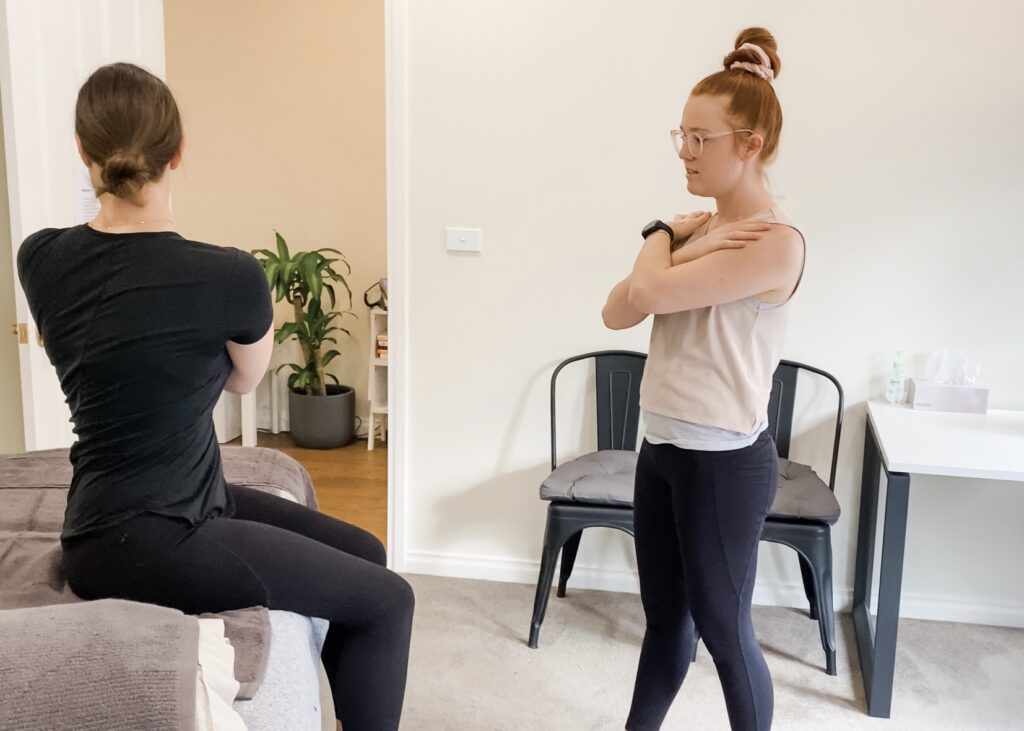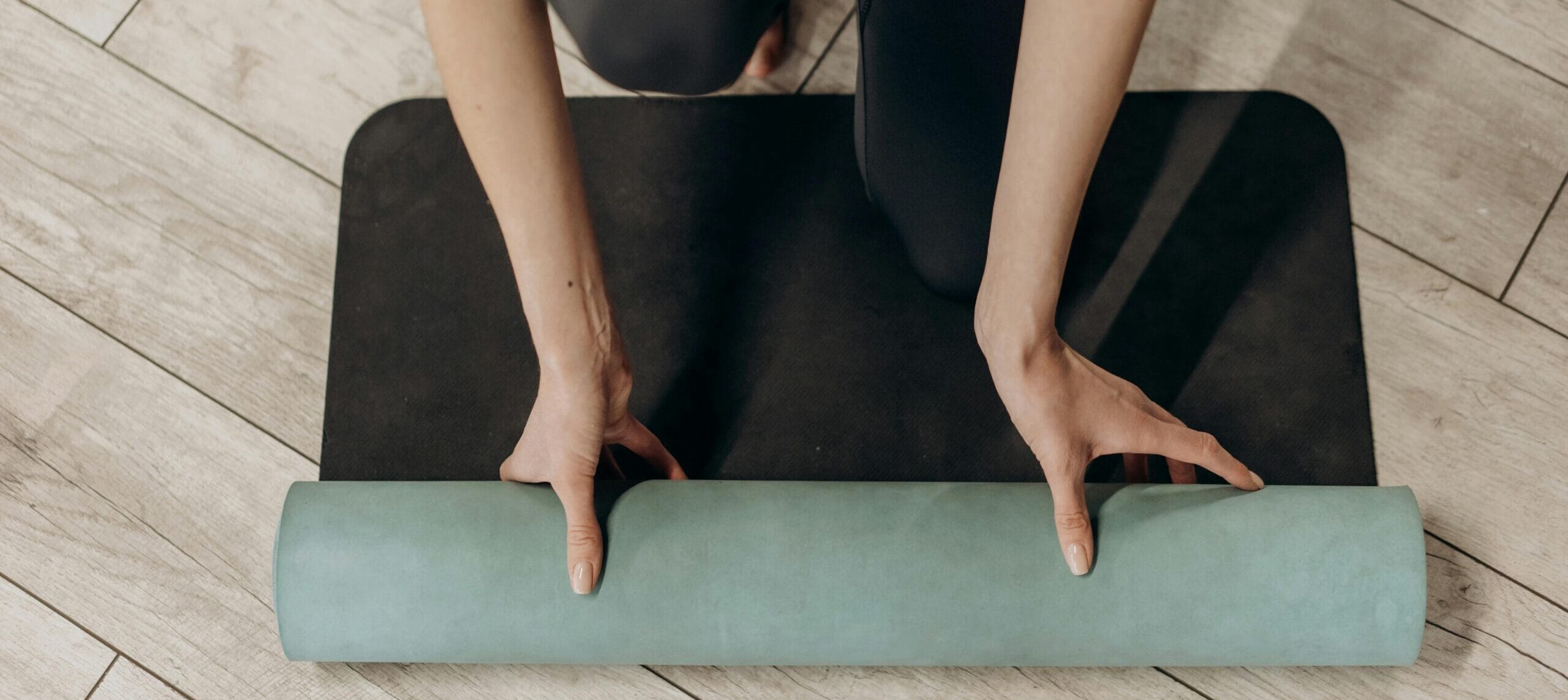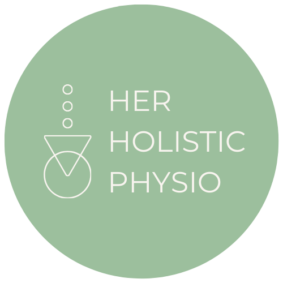
1:1 Consultations
Jump to:
- What Can Physio Help With?
- What to Expect During An Initial Consultation
- Pricing
- Frequently Asked Questions
What Can Physio Help With?
Pain and Musculoskeletal Conditions:
- Recurring niggles, tightness and pain
- Persistent or chronic pain
- Injury rehabilitation
- Low back pain
- Generalised hypermobility
- Neck pain and headaches
- Osteoarthritis and osteoporosis
- Rehabilitation after orthopaedic surgery
Prenatal & Postpartum: (not including pelvic floor)
- Pelvic girdle pain
- Pregnancy-related low back pain
- Neck pain
- Rib and upper back pain
- Wrist & thumb pain
- Staying active in pregnancy
- Birth preparation
- Recovery after birth
- Return to exercise postpartum

If your condition or injury is not listed, you're more than welcome to book a FREE DISCOVERY CALL so we can have a conversation to see if Her Holistic Physio is the right choice for you.
What to Expect During An Initial Consultation
Your first session is about me getting to know you, first and foremost, since you are the one experiencing your condition, pain or injury.
We’ll start by having a conversation
The condition, pain or injury
- When and how it started
- The history of the condition, if you’ve had it for a while
- What it’s currently stopping you from doing
- The movements or activities you’re finding challenging
- Your current exercise levels
- If it’s impacting other areas of your life, such as your mental health, sleep or work
How your pain “behaves”
- What movements make it worse or better
- How it feels throughout the day or during different activities,
- If it’s impacting your sleep
- How medications are working for you (if any)
Your goals, both short and long-term
- What you want out of this first session
- Your goals for movement long-term
Plus any other relevant pieces like your past medical history, what you do for work, etc.

This first part is important for informing how I choose to assess the body area, as well deciding what treatment plan I feel will be best to offer you (we collaborate on this).
Next, we move on to assessing movement and physical structures of the body
This may include:
- Assessment of relevant movements such as walking, a squat, bending forwards, and arm or neck movements
- Strength and range of motion assessments
- Specific Physiotherapy tests that provide information about certain structures
- Palpation (a fancy word for “feeling”) the body area, including the relevant muscles, tendons, bones, ligaments and joint capsule

Lastly, starting treatment
Treatment is tailored to your condition or injury, your goals, and most importantly, you. This means we collaborate on the best path forward that aligns with the best available research, what I know from clinical experience, and what you feel will fit in best with your life.
Treatments will be a combination of any of the following:
- Exercise rehabilitation, which could be mobility/stretching, strength-based with weights, balance movements, or Pilates-style exercises
- A personalised home exercise program on an easy-to-use app
- Exercise classes with a tailored program
- Education and empowerment around pain, the condition you have, prognosis, and any other relevant pieces
- Conversation around mental wellness and mindset
- Manual therapy such as remedial massage and joint mobilisation, only if it’s indicated – generally not provided for conditions that are recurring or chronic
Education and Empowerment My goal with treatment is always for you to end up no longer needing to see me anymore
In-between sessions
You can expect follow-up texts or emails between sessions, particularly if I’m not seeing you for a little while.
Throughout our journey together, I am also always available if you have any questions about your home program, treatment, or anything new that comes up for you. This could be in the form of a text or email. I am here for you! This is all included for no additional cost.

Pricing
First Consult
Initial Physio Consult: $185 (1 hour):
A thorough consultation to assess your needs, create a treatment plan, and begin hands-on therapy.
Private health code: 500
Follow-Up Consults
Standard Review Physio Consult: $138 (45 minutes)
A follow-up session to monitor progress, adjust treatment, and continue your recovery.
Private health code: 505
Short Review Consults: $92 (30 minutes)
For simple musculoskeletal concerns, acute injuries and home program progressions
Not suitable for chronic painor complex conditions
Private health code: 505
Extended Review Consults: $185 (1 hour):
For the treatment of 2 body areas, more complex conditions, or for clients who want a more spacious experience
Private health code: 506
Pack Prices
1:1 Consult Pack Prices: 30-min sessions
5-pack: $425 ($85 per 30-minute session) – save $35
10-pack: $800 ($80 per 30-minute session) – save $120
1:1 Consult Pack Prices: 45-minute sessions
5-pack price: $625 ($125 per 45-minute session) – save $65
10-pack: $1200 ($120 per 45-minute session) – save $180
Frequently Asked Questions
Are you a Pelvic Floor Physiotherapist?
No, I am not a Pelvic Floor Physiotherapist. I work closely with local Pelvic Floor Physiotherapists where that care is needed.
Can I get a rebate from my private health insurer?
Physiotherapy is covered under most Private Health Insurance extras cover. The amount of your rebate is determined by the level of cover you have so you’ll need to speak to your insurer to find out the details. You’ll pay for the full price of the consult and a paid invoice will be sent to you that you can then send to your health insurer for the rebate.
Do you take Medicare plans?
Medicare will rebate around $60 for patients referred to a Physiotherapist on an Enhanced Primary Care (EPC) or Chronic Disease Management Plan. These are for individuals experiencing chronic conditions lasting longer than 4-6 months. You are eligible for up to 5 per year. You’ll pay for the full price of the consult and a paid invoice will be sent to you that you can then upload to Medicare for the rebate.
How do you take payments?
Payment options are:
- Bank transfer through PayID (no fees)
- Card payment through Stripe (1.5% fee applies)
- Cash (please note no chnage can be given so it will need to be the exact amount)
